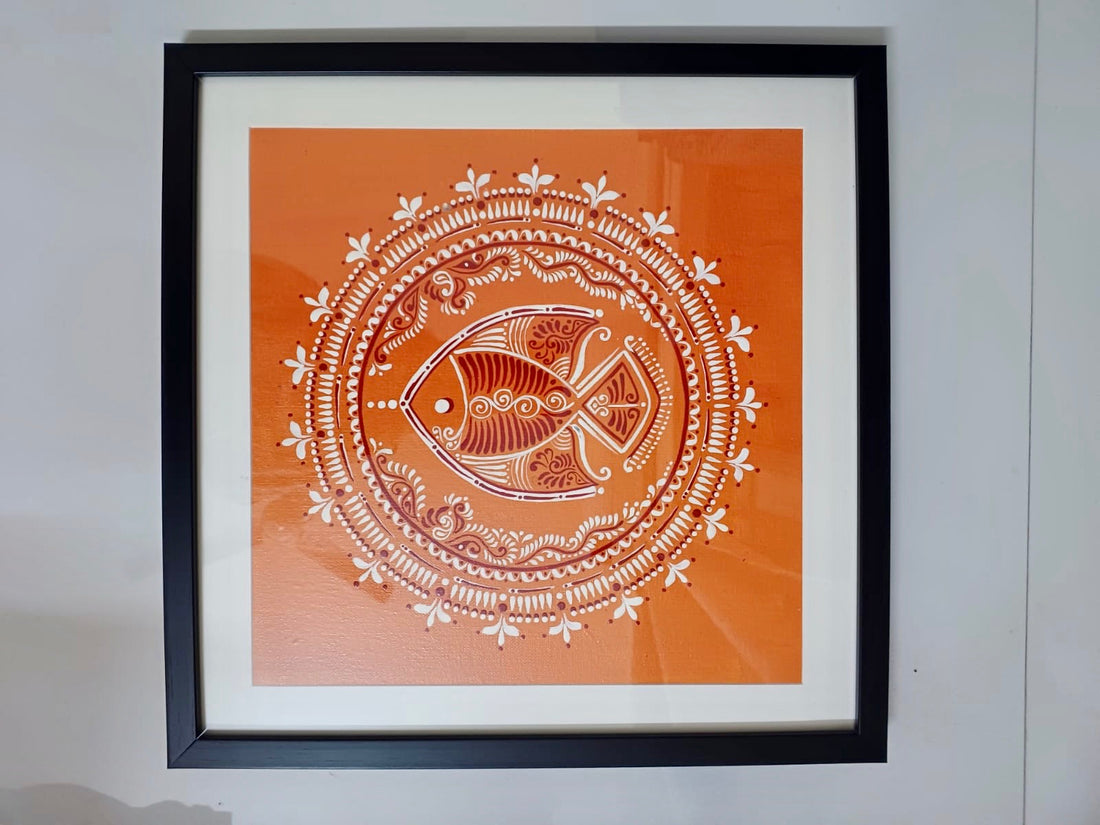
Alpona Art: Bengali Tradition in Decorative Folk Art
Alpona art is a mesmerizing form of Bengali folk art that has adorned homes, courtyards, and temples for centuries. This intricate and symbolic art form is not just a visual delight but a deep expression of cultural identity, spirituality, and festivity. From its origins in Bengal to its relevance in contemporary home decor, Alpona remains a cherished tradition that blends artistic elegance with profound meaning.
The Origins and Significance of Alpona Art
Alpona (also spelled Alpana) derives its name from the Sanskrit word alimpana, meaning ‘to plaster’ or ‘to coat’. Traditionally, women in Bengal created Alpona designs using a mixture of rice paste and water, drawing elaborate motifs freehand on the floors and walls during religious festivals, weddings, and auspicious occasions.
These designs are deeply symbolic, often featuring geometric patterns, floral motifs, conch shells, and footprints of deities like Lakshmi, the goddess of wealth and prosperity. Each motif carries cultural significance, embodying wishes for good fortune, protection, and harmony.
The Artistic Techniques and Evolution of Alpona
Alpona art was historically created with fingers, allowing artists to connect intimately with their designs. The organic white pigment on an earthen or red surface created a striking visual contrast. Over time, modern adaptations have introduced colored powders, acrylic paints, and digital interpretations while still honoring the traditional aesthetic.
In contemporary settings, Alpona has expanded beyond temporary floor art to more permanent expressions—seen in wall murals, fabric prints, pottery, and even urban public spaces. This fusion of tradition with modern creativity has made Alpona a beloved art form in heritage-inspired home decor.
Alpona in Festivals and Celebrations
Bengali festivals like Durga Puja, Lakshmi Puja, and Pohela Boishakh (Bengali New Year) are incomplete without Alpona designs gracing temple floors and courtyards. Women gather to create these intricate patterns, often accompanied by devotional songs and prayers. The communal act of drawing Alpona symbolizes unity, devotion, and the ushering in of prosperity.
Bringing Alpona into Your Home Decor
For those who appreciate heritage-inspired aesthetics, Alpona art offers an elegant way to infuse cultural charm into modern interiors. Here are some creative ways to incorporate Alpona into your home:
• Wall Murals: Hand-painted Alpona motifs on accent walls add an ethnic and timeless appeal to any room.
• Furniture & Textiles: Alpona-inspired prints on cushions, rugs, and upholstery bring a touch of tradition into everyday spaces.
• Tableware & Ceramics: Delicate Alpona patterns on plates, coasters, and vases serve as unique decor pieces.
• Entryway & Courtyard Designs: Temporary or permanent Alpona designs in entrances or patios create an inviting and auspicious ambiance.
Why Alpona Art is a Must-Have in Heritage Home Decor
Alpona art is more than just decoration—it is a celebration of tradition, storytelling, and artistic heritage. For those who wish to embrace Indian folk art while maintaining a contemporary aesthetic, Alpona serves as the perfect bridge between the past and present.
House of Saaj is proud to bring this exquisite tradition into modern homes, offering curated Alpona-inspired decor pieces that blend timeless craftsmanship with elegant design. Explore our collection by an emerging artist, Saswati Banerjee and invite the beauty of heritage into your living space today!
Discover more about India’s rich artistic traditions by exploring our latest collections at House of Saaj. Stay connected with us on social media for weekly insights into heritage art!
